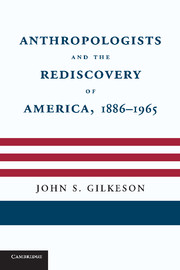2 - Social Class in the Ethnography of the American Scene
Published online by Cambridge University Press: 06 December 2010
Summary
When Robert and Helen Lynd published Middletown: A Study in Contemporary American Culture in 1929, their book received great critical and popular acclaim. Vigorously promoted by publisher Alfred Harcourt, warmly praised in book reviews, and prominently featured in bookstore windows, Middletown went through six printings in 1929 alone. Selling more than 30,000 copies over the next eight years, the Lynds' book became the first best seller in American social science. In the process, Middletown did more than any other work published before Ruth Benedict's Patterns of Culture to popularize the anthropological concept of culture.
Middletown also inaugurated “the ‘ethnography’ of the American scene.” Inspired by the Lynds' success, social scientists fanned out across the United States to subject other American communities to even more intense anthropological scrutiny. Like Middletown, many of these community studies documented the salience of class distinctions, thereby challenging a fundamental tenet of American exceptionalism: that the United States, unlike Europe, did not have a class system. These community studies also wove the dense social fabric that many American intellectuals felt lacking. By the 1950s, thanks to the success of ethnographies of the American scene, social scientists rivaled novelists and foreign travelers as authoritative commentators on the American scene.
Yet the effect of Middletown and its 1937 sequel, Middletown in Transition, on the ways in which Americans viewed class distinctions on the American scene paled in comparison with that of W. Lloyd Warner and his students and colleagues, who shifted the focus away from classes as economic entities determined by occupation and income to “social classes,” construed as little worlds or subcultures distinguished by their cultural attributes or symbols of status.
- Type
- Chapter
- Information
- Anthropologists and the Rediscovery of America, 1886–1965 , pp. 69 - 117Publisher: Cambridge University PressPrint publication year: 2010



